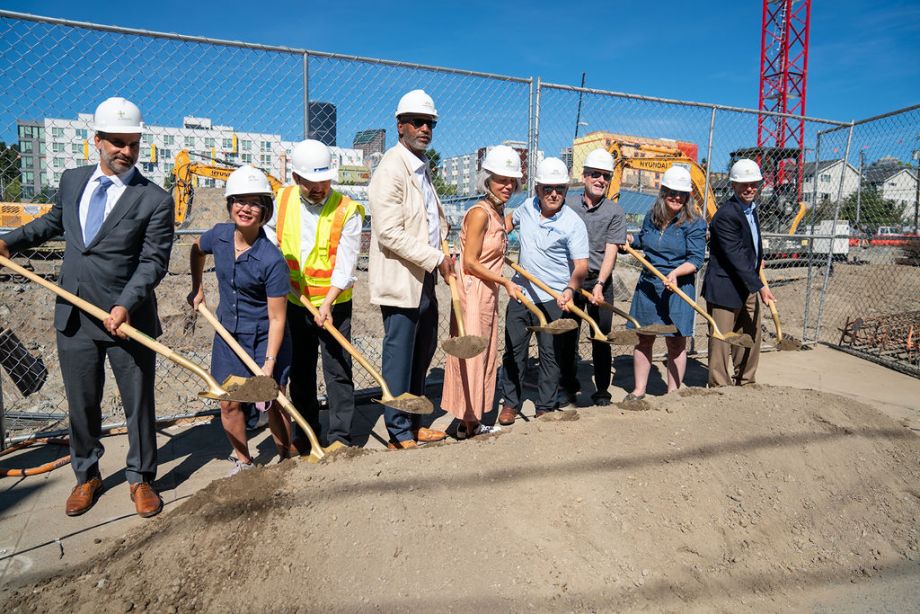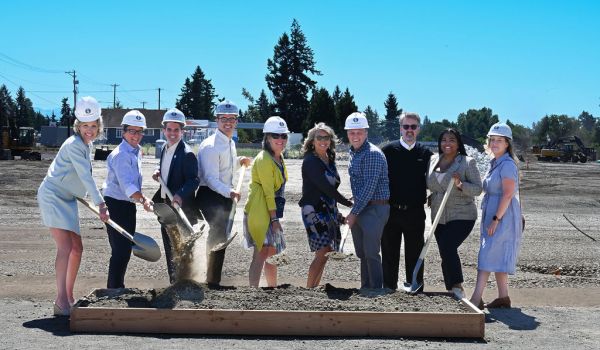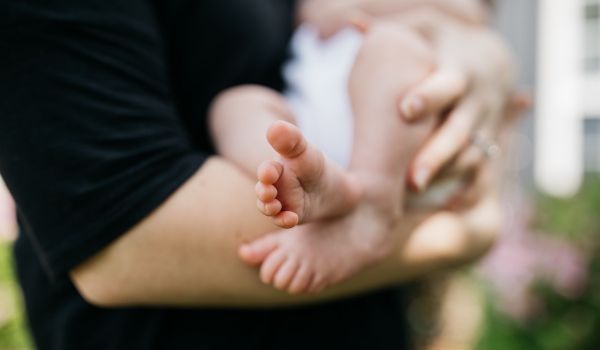Last May, construction kicked off on a Seattle housing project designed specifically for multigenerational working families — a population that’s been vastly overlooked in the construction boom of the past decade.
The project is currently called Yesler Family Housing and the developers are the Seattle Chinatown-International District Preservation and Development Authority, or SCIDpda, and Community Roots Housing. When the building opens in 2023, it will hold over 150 apartments with 25 three-bedroom and seven four-bedroom affordable units as well as a ground-floor childcare and early learning center and courtyards for child care, community gardening and resident gatherings.
“For many of us, community is very, very important — and you want to be able to stay in the community you’re most comfortable in,” says Maiko Winkler-Chin, SCIDpda’s executive director. “How do we allow for that in the housing built? For years, it’s been challenging for us to state the need for family housing and public resources to go to family housing.”
SCIDpda was founded 46 years ago and has been advocating for affordable family housing in Seattle for years. Its last new-construction project, which opened in 2004, was the first affordable housing designed for families in the Chinatown International District. For Winkler-Chin, the project modeled the importance of not just developing affordable housing with larger, family-friendly apartments, but making sure those residents are close to amenities and services.
“The last [development] we built out of the ground is our most successful,” Winkler-Chin says. One building contains a neighborhood library, while a second building houses a community center health center and the Denise Louie Education Center, an organization founded to meet the childcare needs of Asian immigrants moving to the Chinatown International District. Over 20 percent of the families that moved in in 2004 still live there, she says.
Since then, the city’s rapidly rising real estate costs made it more difficult for SCIDpda to take on development. In expensive housing markets, family-friendly buildings are less incentivized, as larger units are more expensive to build and generate less income for a project. As developers often count their success by the number of affordable units produced, the larger apartments are a disincentive.
An opportunity came along with the redevelopment of Yesler Terrace, a 30-acre site developed by the Seattle Housing Authority in the early 1940s as the city’s first publicly subsidized housing community. The Seattle Housing Authority began redevelopment in 2013 to replace all 561 original units and add new affordable and market-rate housing in partnership with nonprofit and private developers.

Yesler Family Housing groundbreaking (Photo by Ronn Meriales)
Winkler-Chin, a longtime member of the now-disbanded Yesler’s Citizen Review Committee, jokes that she has been “stalking this for 10 years” with hopes to develop another family-centered building. In 2018 the Seattle Housing Authority released a request for proposals for affordable housing with larger units on a site across the street from an elementary school. SCIDpda pulled together a proposal and was selected in 2019.
In its proposal, SCIDpda was particularly thoughtful in how to integrate family-friendly design and forge partnerships to ensure the project’s success. Local developer Community Roots Housing came on as co-development partner. “Our goal here is to bring the firepower, balance sheet and history and knowledge of [Low-Income Housing Tax Credit] development, but really step aside to let SCIDpda take the lead,” says Chief Executive Officer Christopher Persons.
SCIDpda worked with the Denise Louie Education Center to secure a relocation and expansion into this proposed project; it will occupy 8,400 square feet on the ground floor. The organization connected with the Seattle University Youth Initiative, which works with the nearby elementary school, to understand what kind of building would best fit with the school and surrounding community.
“We wanted to understand — what are the types of families that will live in this building?” says Winkler-Chin. After selection, SCIDpda consulted with the Seattle Housing Authority to learn how families had settled into other apartments at Yesler Terrace. “We wanted to understand what was working,” she says, “because, in certain cultures, the open-concept kitchen really works and in other cultures, it’s a disaster.”
SCIDpda’s proposal included small details other developers might leave out, like laundry machines on every floor, plentiful outdoor space designed for children, and using Denise Louie’s commercial space as an after-hours playspace when the center isn’t open.
Susan Yang, Denise Louie’s executive director, says there’s increasing interest in partnering affordable housing development with childcare providers: “It’s important and it’s a good match, even if it’s not a perfect match.” Beyond childcare and early childhood education, Denise Louie provides its broader community with support like health screenings and job opportunities.
As construction on Yesler Family Housing moves forward, SCIDpda is gearing up for its next project. Known as North Lot, the Beacon Hill development will include 160 units of affordable, family-sized housing alongside a facility dedicated to elderly care and a facility for the Jose Marti Child Development Center. It’s expected to open in 2024.
As Seattle pushes to build more affordable housing, and prioritize equity in the city’s growth plan, Winkler-Chin is hopeful there will be more opportunities and funding for affordable housing designed holistically for families.
“Is the outcome we really want for affordable housing a unit count? Or do we want something bigger and greater than that?” she asks. “There are bigger, aspirational outcomes that can come from a family who is able to live in a place that really suits their needs.”
This article is part of Backyard, a newsletter exploring scalable solutions to make housing fairer, more affordable and more environmentally sustainable. Subscribe to our weekly Backyard newsletter.

Emily Nonko is a social justice and solutions-oriented reporter based in Brooklyn, New York. She covers a range of topics for Next City, including arts and culture, housing, movement building and transit.
Follow Emily .(JavaScript must be enabled to view this email address)



_920_518_80.jpg)














